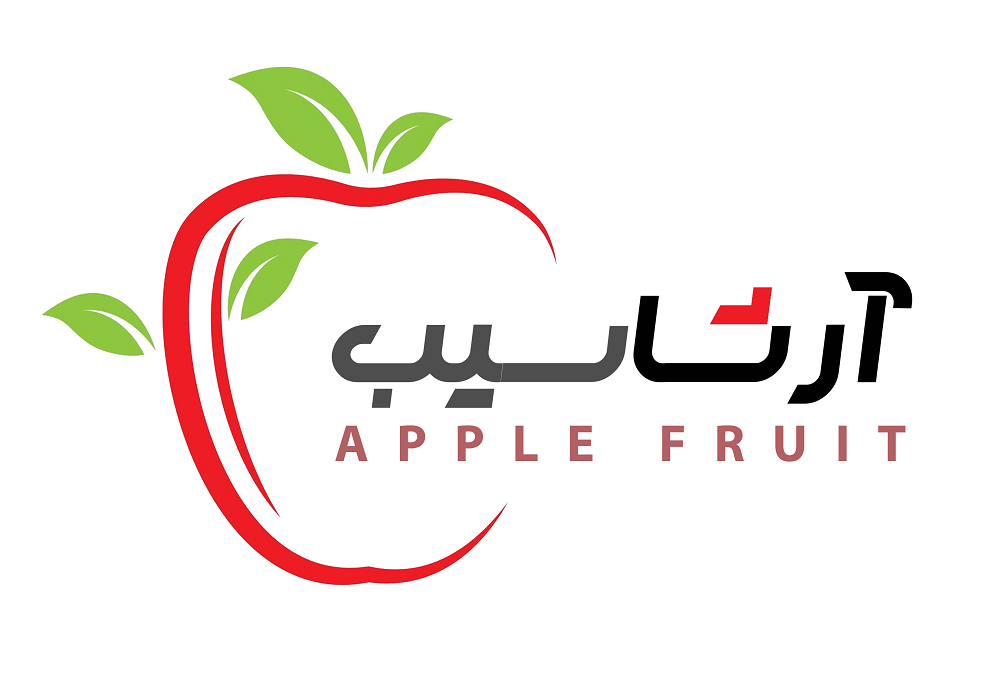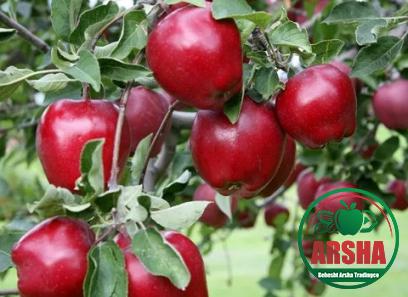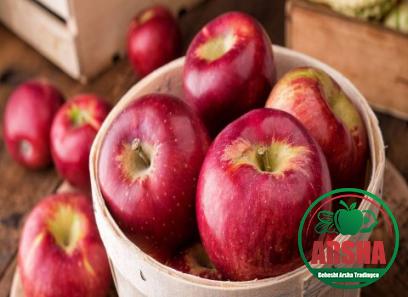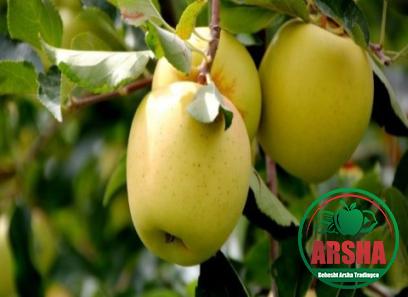Red apple price list in November 2023
The import, export, and sale of the red apple are growing worldwide
However, this does not apply to all kinds of red apples
Moreover, the market for some of these apples might either be good or bad depending on the country
For example, although the global market for red delicious is still substantial, its demand in the USA is decreasing, giving its place to the Gala and Fuji
“Red Delicious” originated in an orchard in 1872 as “a round, reddish-yellow fruit beyond sweetness
” Stark Nurseries held a contest in 1892 to find a substitute for “Black Ben Davis” apples
The winner was an apple with red and yellow stripes sent by Jesse Hyatt, a farmer in Peru, Iowa, who called it “Hockey” Stark Nurseries bought the rights from Hyatt, renamed the Stark Delicious strain, and started releasing it
Another apple tree, later named “Golden Delicious,” was sold by Stark Nurseries after it was purchased from a farmer in Clay County, West Virginia, in 1914
“Delicious” became “Red Delicious” as an acronym
Red Delicious has fallen victim to its popularity
As consumers began buying more of their groceries from large supermarkets, the popularity of apples encouraged commercial growers to increasingly choose long storage and cosmetic appeal over flavor and palatability, resulting in less palatable fruit
Red fruit selection in particular led to a lack of flavor selection, and the genes that created the yellow lines on the original fruit were on the same chromosomes as those of the flavor-producing compounds
Breeding for uniformity and shelf life favors a thicker skin
Later, when other varieties hit the supermarkets, the demand for “Red Delicious” dropped
In the 1940s, apples were most popular in the United States

In the 1980s, Red Delicious made up three-fourths of Washington state’s crop, but beauty-picking and long storage over flavor made apples less popular, and demand fell when department stores began stocking other varieties
In the 1990s, reliance on the now-undesirable “Red Delicious” helped bring Washington state’s apple industry “to the brink of collapse
” In 2000, Congress passed legislation and President Bill Clinton signed his endorsement to bail out the apple industry after apple growers lost $760 million since 1997
Farmers began replacing their orchards with other varieties such as Gala, Fuji, and Honeycrisp
In 2000, this variety accounted for less than half of Washington state’s production, and by 2003 the crop had dwindled to 37 percent of the state’s crop, accounting for 103 million cases
Although Red Delicious remained the largest producing variety in the state in 2005, other varieties are gaining popularity, notably the Fuji and Gala varieties
By 2014, the Washington Apple Commission recommended farmers export 60% or more of their production
In 2018, Gala Apple surpassed sales of Red Delicious in the United States for the first time
In 2020, production continued to decline
The COVID-19 pandemic was expected to further reduce demand as many cafeterias and other typical apple outlets closed
Red Apple Price
The price of a red apple depends on its kind
Apples are found in different shapes, colors, and qualities that affect their taste, storage, and longevity
For example, Gala is a cultivated apple variety with a mild, sweet flavor and a striped or speckled appearance
It overtook Red Delicious as the highest-producing apple variety in the United States in 2018, according to the American Apple Association
This was the first time Red Delicious had been produced in any form in over 50 years
Gala apples are heterogeneous in color, usually vertically striped or speckled, mostly orange, sweet, smooth, and flavorful, eaten raw and cooked, and are particularly good for making sauces
The first Gala apple tree was the result of many seedlings resulting from a cross between a Golden Delicious and a red-orange cherry tree planted in New Zealand in the 1930s by horticulturist J
Kind
Donald W
Mackenzie, an employee of the Stark Bros Arboretum, received a US botanical patent for this variety on October 15, 1974
It is a recent fruit to the UK, where it was first grown in commercial sizes in the 1980s
The variety now accounts for around 20% of all commercial edible apples grown in the UK and often replaces Cox’s, Orange Pippin
Several gala sports, most of which have been chosen to enhance the red color, including the famous Royal Gala
The original variety produced fruit with orange stripes and partial orange-red on a yellow background
Since then, many unregistered sports have been recognized
Gala apples are grown from May to September in the northern hemisphere, but like most apples, they are available most of the year through the use of cold storage and controlled air storage
Australian Gala will be available from the end of January
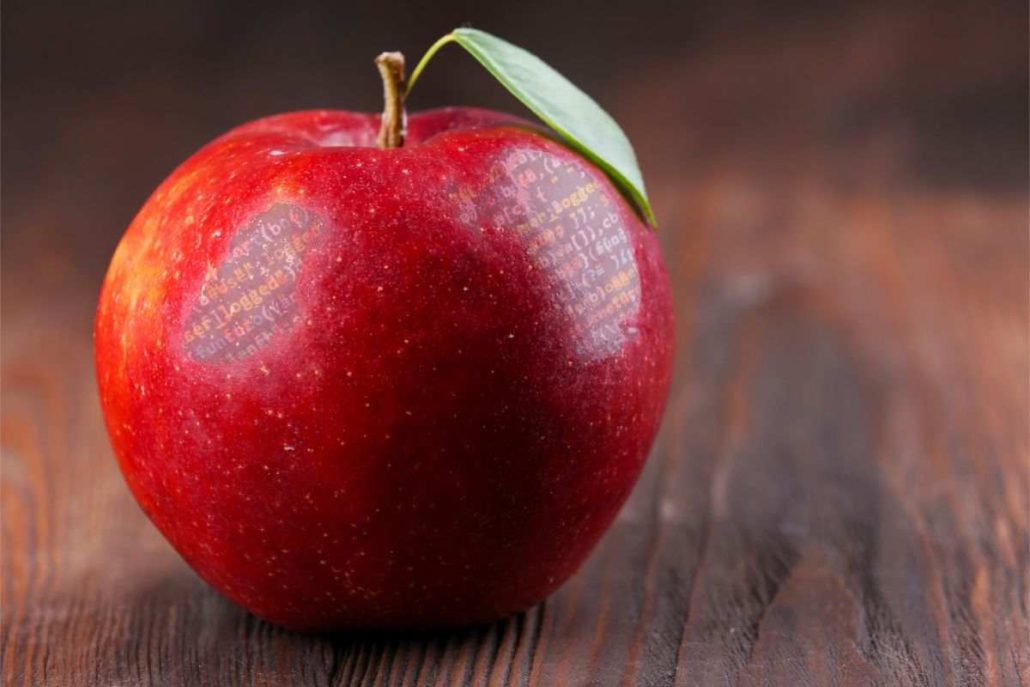
California fruits are available until October
While the season usually only lasts 9 or 10 months, it can last all year
Due to the fact that some apples are still grown in some orchards and the fact that they can be refrigerated for several months, this means that Gala apples are available year-round in some Australian markets
Their taste is usually different (slightly less sweet) than that of the season
The UK season starts in late summer (August)
Storage means that British fruit is available almost all year round, as are fruit from other origins
Patented by Stark in 1977, Royal Gala is a celebratory sport that produces redder fruit than the original variety
It is a pink candy apple and is therefore usually eaten fresh
Royal Galas are typically harvested in early to late February in the southern hemisphere
In New Zealand, the original pink Gala almost disappeared as a commercial apple in favor of the dark-skinned Royal Gala
Red Apple Store
Red apple would most likely be among the fruits that you might see in a grocery store
One of the features of red apples is particularly their shiny and attractive appearance
Thus, most of the sellers would try to have them in the front of their shops
In the following lines, we would try to describe some of the red apples that are used in this way
Honeycrisp (Malus pumila) is an apple variety (cultivar) developed at the Horticultural Research Center at the University of Minnesota, Twin Cities
Awarded a test rating of MN 1711 in 1974, patented in 1988, and issued in 1991, Honeycrisp, which was to be phased out, quickly became a valuable commodity because its sweetness, hardness, and texture make it an ideal apple to eat uncooked
”
the apples weren’t bred to grow, store, or ship well
They were bred to taste: crunchy, with balanced sweetness and acidity
” It has larger cells than most apple varieties, a trait associated with juiciness since, theoretically, more cells rupture when you bite, allowing more juice to enter the mouth
Honeycrisp also maintains its hues well and has a relatively long shelf life when stored in cool, dry conditions
Pepin Heights Orchards shipped the first Honeycrisp apples to grocery stores in 1997
The Honeycrisp name was trademarked by the University of Minnesota, but university officials were unsure of the protected place in 2007
A large Honey Crispy contains about 113 calories
U
S
Botanical Patent No
7197 and Center for Horticultural Research Report 225-1992 (AD-MR-5877-B) indicate that Honeycrisp was a hybrid of the Macoun and Honeygold apple cultivars
However, a genetic fingerprint by a group of researchers in 2004, which included those credited with the plant’s U
S
patent, revealed that neither of these strains are a parent of Honeycrisp
One parent was found to be a keepsake hybrid (which itself is a Frostbite (MN447) x Northern Spy mix), while the other was identified in 2017 as the as yet unreleased University of Minnesota pick MN1627
Honeycrisp’s grandparents on the MN1627 side are the Duchess of Oldenburg and the Golden Delicious
The US patent for the Honeycrisp variety expired in 2008, although patent protection lasted until the end of 2031 in some countries
The patent rights had raised more than $10 million by 2011, when the University of Minnesota split three avenues between its inventors, the college and the department where the research was being conducted, and funding for other research
The University of Minnesota crossed Honeycrisp with another apple variety, Minnewashta (trade name Zester) to create a hybrid called Minneiska (trade name SweeTango), which has been cleared as a “managed variety” to control how and where it’s grown and sold

Sugar Bee is an open-space inter-pollination between Honeycrisp and an unknown cultivar discovered in Minnesota in the early 1990s
Honeycrisp apple blossoms are not fertilized by themselves, so there must be another apple variety as a pollinator to get the fruit
Most other apple varieties will pollinate Honeycrisp, as well as several types of crabapple
Honeycrisp does not arise when grown from seed
Trees grown from Honeycrisp apple seeds are hybrids of Honeycrisp and pollination
Young trees typically have a lower thickness of large, well-colored fruit, while older trees have a higher density of fruit with decreasing size and color quality
Fruit density can be adjusted by removing flower clusters or small fruit to counteract the impact
The firmness of the meat is also generally better with a lower stocking density
The bitter core affects honey grains disproportionately, typically affecting 23% of the crop
Honeycrisp apple blossoms are self-sterilizing, so another variety of apple needs to be nearby for pollen to get the fruit
Most other apple varieties will pollinate Honeycrisp, as well as several types of crabapple
Honeycrisp does not arise when grown from seed
Trees grown from Honeycrisp apple seeds are hybrids of Honeycrisp and pollen
Apple cultivators in New Zealand’s South Island have started growing Honeycrisp to supply off-season consumers in the United States
The first batch of New Zealand-grown Honeycrisp varieties brought to the North American market was trademarked Honey Crunch
It is among the top fifteen most popular apple varieties in the United States, according to the US Apple Association website
Red Apple for Sale
The availability of a kind of red apple for sale relies on an array of factors such as its tree, the country in which it is produced, the unavailability of water resources, etc
In the following lines, we try to introduce the Macintosh, Fuji, and Empire red apple’s chain of production and marketing as an example
McIntosh, McIntosh Red or colloquially Mac, is a variety of the apple, the national apple of Canada
The fruit has a red-green skin, a sour taste, and delicate white flesh that take its ultimate shape in the final days of September
In the 20th century, it was known as the most famous variety in eastern Canada and New England and is considered a multipurpose apple suitable for cooking and eating raw
Jef Raskin, an employee at Apple Inc
, put the Macintosh computer font name on the fruit’s name
The native McIntosh bush was discovered by John McIntosh in 1811 at his Dundela farm in Upper Canada
He and his wife planted it and the family began grafting the tree and selling the fruit in 1835
It entered commercial production in 1870 and became increasingly popular in northeastern North America after 1900
While the fruit is still important in production, the fruit’s popularity waned in the early 2000s in the face of competition from cultivars such as Gala
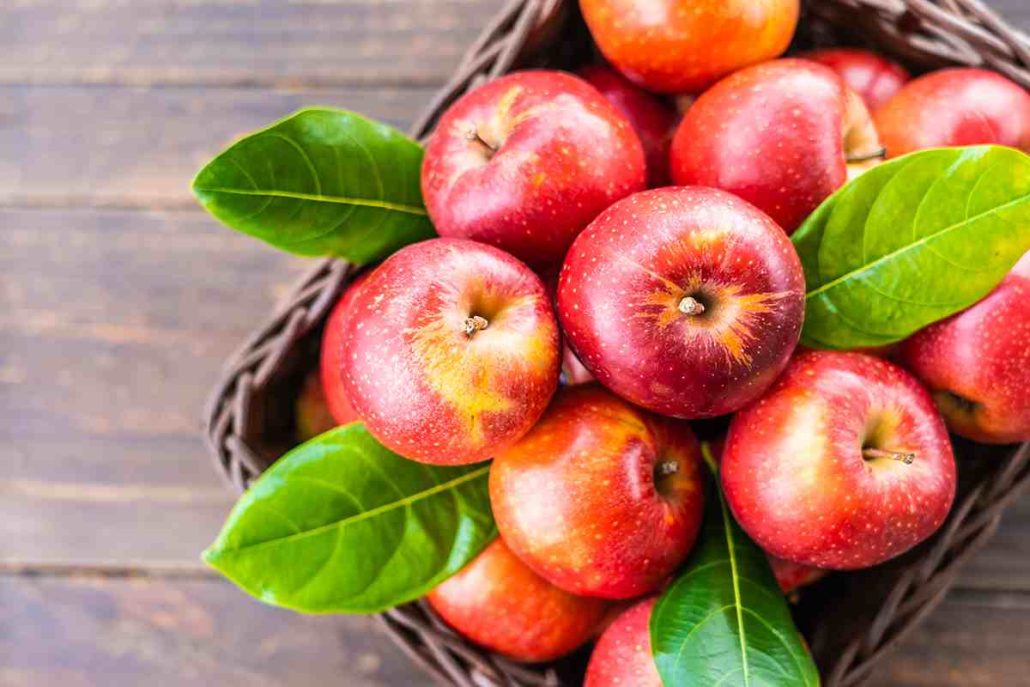
It is one of the top fifteen most popular apple varieties in the United States, according to the US Apple Association website
Mutant (Sport) by McIntosh is McIntosh Rogers, synonyms: Red McIntosh, Double Red McIntosh
This mutant was found in New York, the USA in 1930
The McIntosh or McIntosh Red (aka “Mac”) variety is the most popular apple variety in eastern Canada and the northeastern United States
It is also found in the Kashmir region of Southeast Asia
It also sells well in Eastern Europe
McIntosh is a moderately vigorous, spreading tree bearing annual or biannual bearing
The tree is hardy in at least USDA hardiness zone 4a, or 34 °C (−29 °F)
The McIntosh apple is a small to medium-sized round fruit with a short stalk
It has a thick, thin, red-green skin that’s easy to peel
Sometimes its white flesh has a green or pink tint and is tender, mushy, and firm, and becomes mushy quickly
The flesh becomes easily infected
The fruit is considered “all-purpose,” suitable for raw consumption and cooking
Used primarily for desserts, it requires less cooking time than most varieties
It is usually mixed when used for juice
The fruit grows perfectly in cool regions where nights are cool and autumn days are clear; otherwise, it has bad color, and soft flesh, and tends to fall off the tree before harvest
Can be stored in air for two to three months, but is prone to burns, tenderness of flesh, sensitivity to cold and coprinus rot
It May soften if stored below 2°C (36°F)
Fruit is optimally reserved in a controlled environment with temperatures between 1
7 and 3
0 °C (35
1 and 37
4 °F), the air content of 1
5-4
5% oxygen, and 1-5% carbon dioxide; In these circumstances, McIntosh will be retained for five to eight months
Macintosh is commonly grown in Canada, the United States and Eastern Europe
It’s one of the top five apple varieties to use for cloning, and research suggests that Macintosh harvests well when hardy
If not sprayed, McIntosh easily succumbs to apple scab, which can result in entire crops becoming unsaleable
It is generally not very susceptible to fire blight, powdery mildew, cedar and apple rust, quince rust and hawthorn rust
It is prone to fungal diseases such as Nectria Canker, Brown Rot, Black Rot, Apple Rust 1 Sweat (but it resists Sweat 2)
It is moderately resistant to Pezicula bark blight and Alternaria leaf spot and resists brown leaf spot well
Fuji apple is a variety of apple developed by farmers at the Tohoku Research Station in Japan in the final years 1930s and brought to market in 1962
It was contrived by combining two American apple varieties – Red Delicious and Old Virginia Ralls Janet (sometimes referred to as “Rawls Jennet”)
Based on the US Apple Association website, it is among the top nine most popular apple varieties in the United States
Its name derives from the first part of the city where it was developed: Fujisaki

Fuji apples are usually round and range in size from large to very large, measuring 75 mm (3
0 in) in diameter
They contain between 9 and 11% sugar by weight and have a thicker texture that’s sweeter and crunchier than many other apple varieties, making them popular with consumers around the world
Compared to other apples, Fuji apples have a very long shelf life, even without refrigeration
With refrigeration, Fuji apples can stay fresh for up to a year
In Japan, Fuji apples are still an undisputed bestseller
Japanese consumers prefer the crunchy texture and sweetness of Fuji apples (somewhat similar to the popular Nashi pear) almost to the denial of other varieties [citation needed], and Japanese apple imports remain low
[Citation needed] Aomori Prefecture, home of the Fuji apples, is Japan’s most famous apple-growing region
Of the 900,000 tons of Japanese apples produced annually, 500,000 tons come from Aomori
In addition to Japan, the popularity of Fuji apples keeps growing worldwide
In 2016 and 2017, Fuji apples accounted for nearly 70% of the 43 million tons grown in China
Since their introduction to the US market in the 1980s, Fuji apples have grown in popularity among American consumers — as of 2016, Fuji apples ranked third on the American Apple Association’s list of most popular apples, behind only Red Delicious and Gala
Fuji apples are grown in traditional apple-growing states such as Washington, Michigan, Pennsylvania, New York, and California
Washington state, which grows more than half of America’s apple crop, produces about 135,000 tons of Fuji apples each year, third in volume after the Red Delicious and Gala varieties
Empire is the name of a clonally bred apple that came from a seed grown in 1945 by Lester C
Anderson, a fruit nutritionist at Cornell University who was conducting research on open pollination in his various orchards
In 1945, scientists at the New York State Agricultural Experiment Station at Cornell University in Geneva, New York, led by A
J
Hinicke, reaped the seed of empire with thousands of his siblings
The Geneva teams grew and tested dwindling subsets of the sibling group until 1966, when the final selection, Empire, was presented to the public at meetings of the New York Fruit Testing Association in Geneva
It is among the top fifteen most popular apple varieties in the United States, according to the US Apple Association website
The apples are picked between September and October and can be stored until January
However, some apple growers, including Verger Denis Charbonneau Mont-St-Grégoire, Quebec, Canada, easily preserve them under controlled refrigeration in a gaseous atmosphere until June
They are still very juicy, firm, crunchy, and sweet
As we have seen and as the preference of consumers is changing worldwide, the demand for sweeter apples such as Golden Delicious is also growing
Thus, exporters around the world are trying to adapt and create new ways of packaging and storing to be able to ship these kinds of apples to longer distances
Some other producers have chosen to import the tree of these apples and have them cultivated and distributed domestically
Fortunately, our company has been successful in creating a global network of apple suppliers and producers
Accordingly, one of the main products that we export to different parts of the world is Golden delicious
We are one of the rare platforms where you can order these apples in large quantities
We have tried to first export them at the time of their harvest and then within special boxes, thus evading any kind of damage to the apples during their conveyance
Please for the wholesale price of Golden Delicious and other information fill out a form on our website
We will contact you as soon as possible
